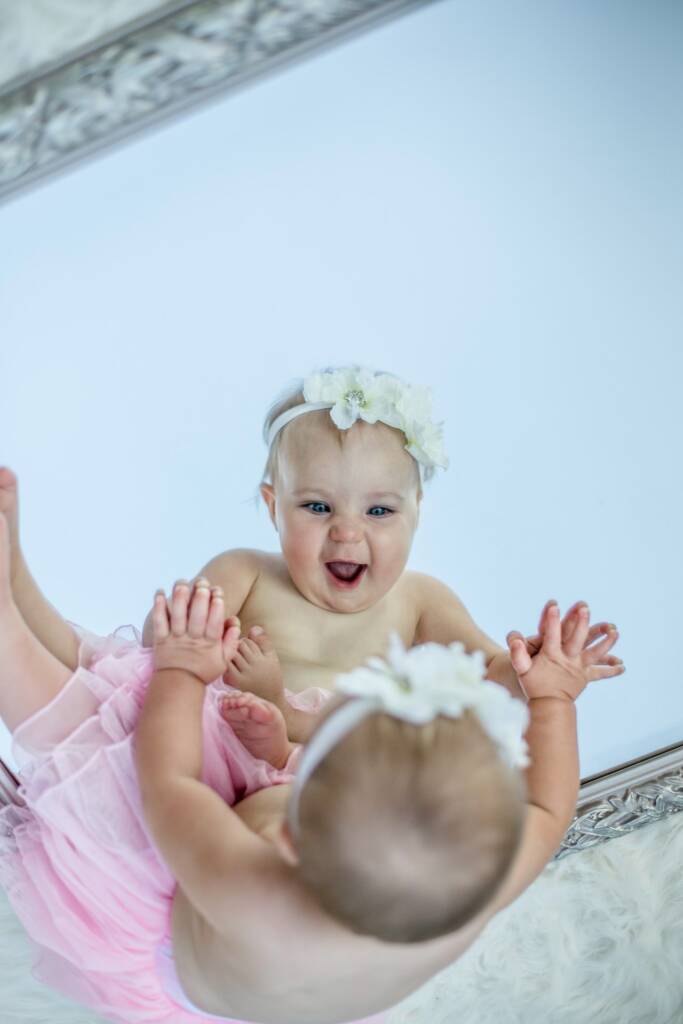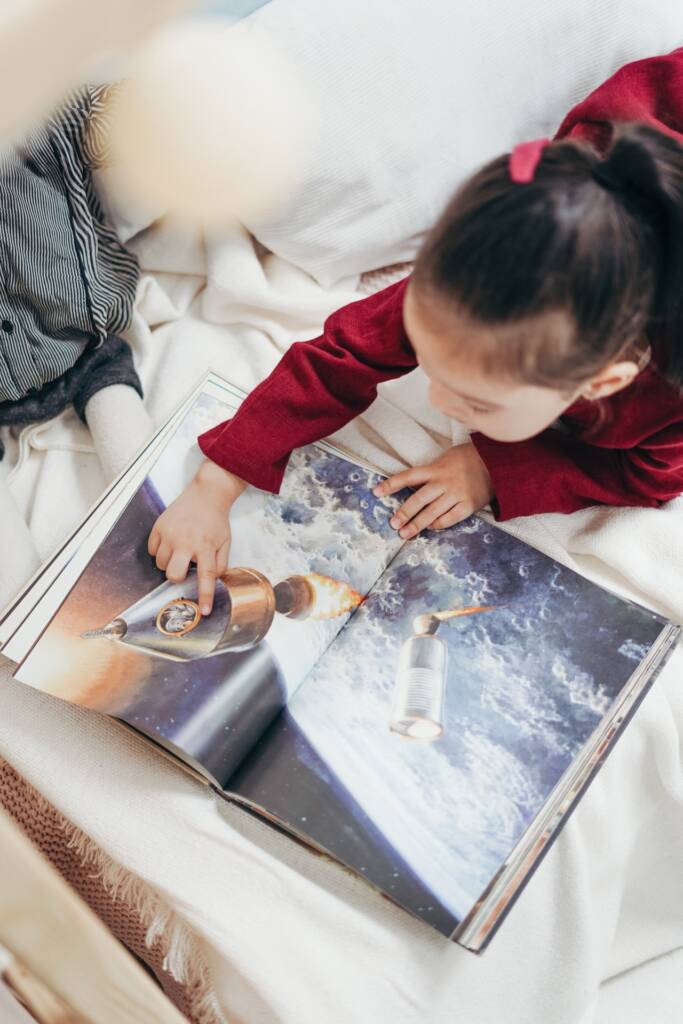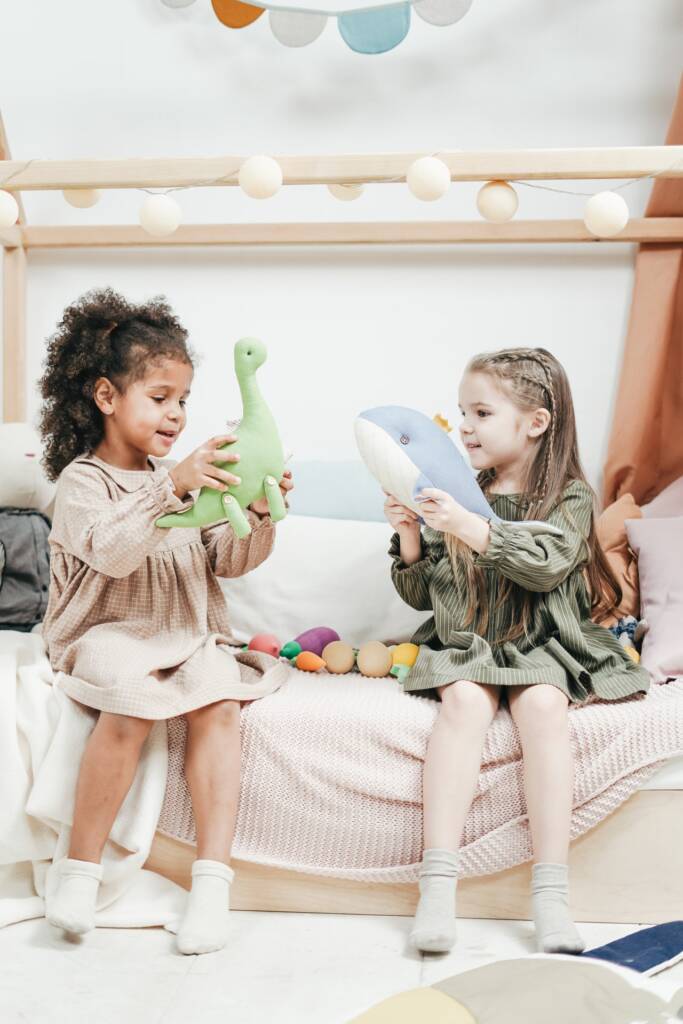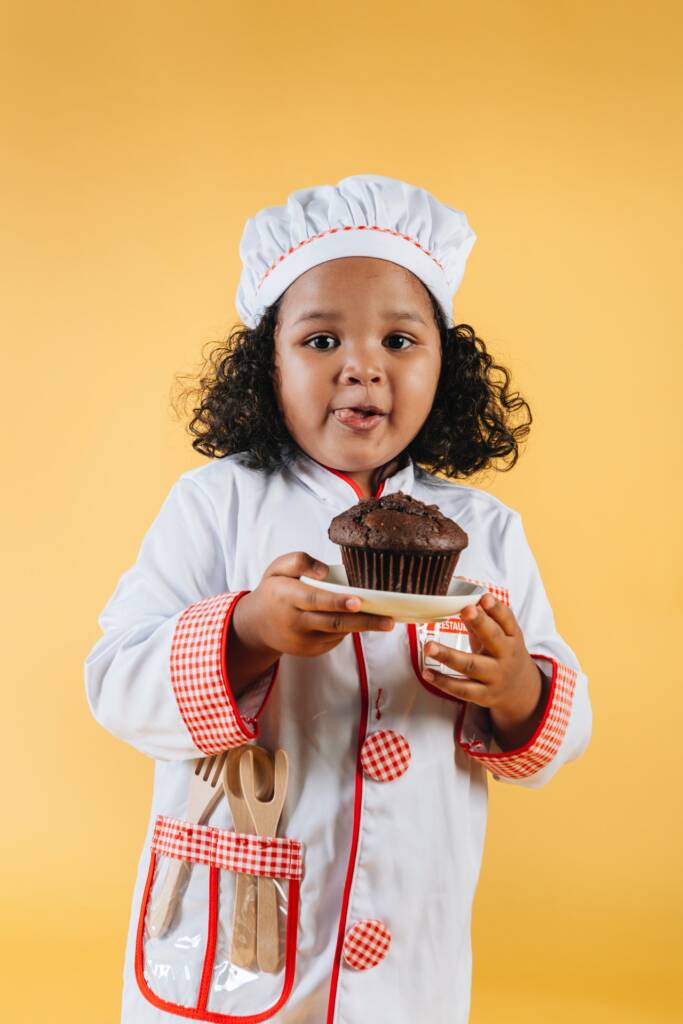Developmental Milestones
According to the CDC guidelines, these are the milestones related to communication, cognition, and social/emotional aspects to consider per age.
Haz click aquí para los indicadores del desarrollo en Español.


12 months
- Knows familiar faces.
- Likes to play with others, especially parents.
- Responds to other people’s emotions.
- Likes to look at self.
- Responds to sounds by making sounds.
- Strings vowels together when babbling (“ah,” “eh,” “oh”).
- Responds to own name.
- Makes sounds to show joy and displeasure.
- Begins to say consonant sounds such as bilabials (“m”, “b”, “p”).

18 months
- Likes to hand things to others as play.
- Shows affection to familiar people.
- Plays simple pretend games.
- Points to show others something interesting.
- Says several single words.
- Says and shakes head “no”.
- Points to show someone what he wants.
- Knows what ordinary things are for; for example, telephone, brush, spoon.
- Points to get the attention of others.
- Points to one body part.
- Can follow 1-step verbal commands without any gestures; for example, sits when you say “sit down”.


2 years
- Copies others, especially adults and older children.
- Gets excited when with other children.
- Shows more and more independence.
- Plays mainly beside other children, but is beginning to include other children, such as in chase games.
- Points to things or pictures when they are named.
- Knows names of familiar people and body parts.
- Says sentences with 2 to 4 words.
- Follows simple instructions.
- Repeats words overheard in conversation.
- Points to things in a book.
- Completes sentences and rhymes in familiar books.
- Follows two-step instructions such as “Pick up your shoes and put them in the closet”.
- Names items in a picture book such as a cat, bird, or dog.

3 years
- Shows affection for friends without prompting.
- Takes turns in games.
- Copies adults and friends.
- Shows concern for crying friend.
- Understands the idea of “mine” and “his” or “hers”.
- Shows a wide range of emotions.
- Separates easily from mom and dad.
- Dresses and undresses self.
- Follows instructions with 2 or 3 steps.
- Can name most familiar things.
- Understands words like “in,” “on,” and “under”.
- Says first name, age, and sex.
- Carries on a conversation using 2 to 3 sentences.
- Says words like “I,” “me,” “we,” and “you” and some plurals (cars, dogs, cats).
- Talks well enough for strangers to understand most of the time.


4 years
- Enjoys doing new things.
- Is more and more creative with make-believe play.
- Would rather play with other children than by himself.
- Cooperates with other children.
- Talks about what she likes and what she is interested in.
- Sings a song or says a poem from memory such as the “Itsy Bitsy Spider” or the “Wheels on the Bus”.
- Tells stories.
- Starts to understand time.
- Remembers parts of a story.
- Understands the idea of “same” and “different”.
- Tells you what he thinks is going to happen next in a book.

5 years
- More likely to agree with rules.
- Likes to sing, dance, and act.
- Can tell what’s real and what’s make-believe.
- Speaks very clearly.
- Tells a simple story using full sentences.
- Uses future tense; for example, “Grandma will be here”.
- Says name and address.
- Knows about things used every day, like money and food.
